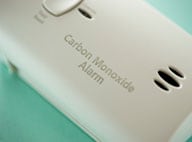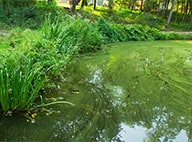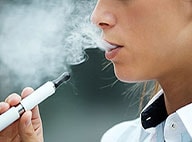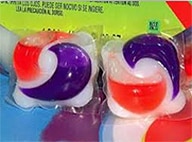National Chemical and Radiological Surveillance Program

Learn how public health surveillance identifies and responds to incidents of public health significance from poison center data with this flowchart [PDF – 502 KB].
Roughly every 8 minutes, call data from poison centers across the country are uploaded to a national reporting database and electronic surveillance system called the National Poison Data System (NPDS). CDC and America’s Poison Centers use the database to improve surveillance of chemical exposures and public health hazards.
Scientists from CDC and America’s Poison Centers monitor NPDS every day, watching for any data anomalies that may represent incidents of public health significance such as outbreaks of illness. Anomalies can include an increase in the number of calls or an increase in reports of specific signs and symptoms. When anomalies are identified, CDC and America’s Poison Centers assist with further activities such as performing enhanced surveillance or notifying the state health department and assisting with a public health investigation.
The nation’s 55 poison centers help with poisoning emergencies and provide information to help prevent poisonings.
People can contact their local poison center by calling 1-800-222-1222. Individual callers will automatically be connected to the poison center covering their area. For an online option, this interactive tool prompts users to answer a few simple questions about a human exposure to approximately 325,000 unique products and substances.

Carbon monoxide (CO) is an odorless, colorless gas that can lead to sudden illness or death if inhaled at high concentrations. After a disaster, there may be power outages which result in people using alternative sources of fuel or electricity for heating, cooling, or cooking. These sources can lead to elevated CO levels in enclosed spaces, poisoning people and animals inside. CDC uses NPDS for surveillance during disaster response and recovery efforts to track reported exposures to CO. Using these data can help inform public health messaging to prevent further injury and death.

In April 2020, MMWR published a report that described an increase in calls to poison centers about exposures to cleaners and disinfectants. Using data from NPDS, CDC and America’s Poison Centers found that poison centers nationwide received 45,550 calls regarding exposures to cleaners and disinfectants during the first three months of 2020 – an increase of about 20% from the same timeframe in 2019. The timing of these reported exposures corresponded to increased media coverage of the COVID-19 pandemic, reports of consumer shortages of cleaning and disinfection products, and the beginning of some local and state stay-at-home orders. The results of this study highlighted the importance of safe and appropriate use of cleaners and disinfectants to prevent potential poisonings and injuries.

Harmful algal and cyanobacterial blooms (HABs) are the rapid growth of algae or cyanobacteria that can cause harm to people, animals, and the environment. In 2019, CDC and America’s Poison Centers worked with five poison centers to conduct follow-up surveys with people who had called regarding a HAB exposure. Fifty-five people were interviewed. Most callers (65%) stated they were exposed through multiple routes with the most common being skin contact (84%) and ingestion (60%). The most frequently reported source of exposure was bathing or swimming in contaminated water. Few callers had heard or read warnings about the dangers of HABs before or during their exposure. This study highlights the importance of characterizing exposures to HABs to tailor public health messaging.

CDC launched an investigation in April 2015 after being alerted to an increase in poison center calls related to synthetic cannabinoids, also known as synthetic marijuana. The results, published in MMWR, led to a surge in media coverage on this issue that created a broader awareness of issues and dangers of using synthetic cannabinoids.

Electronic cigarettes, or e-cigarettes, are devices that heat a liquid mixture to allow users to inhale an aerosol that typically contains nicotine, flavorings, and other additives. While long-term impacts of these products on public health are unknown, one area of concern is the potential for poisonings. A CDC study found that 2,405 e-cigarette exposures were reported to poison centers from September 2010 to February 2014. This work informed public health actions including the Child Nicotine Poisoning Prevention Act of 2015, enacted in January 2016. This law requires any container of liquid nicotine that is sold, manufactured, distributed, or imported into the United States use packaging that is difficult for children under 5 years of age to open.

From May 17–June 17, 2012, poison centers across the country reported 485 cases of children being exposed to detergent-filled laundry pods. CDC partnered with America’s Poison Centers and poison centers in Charlotte and Philadelphia to investigate this public health threat. Their work helped contribute to the decision by the largest manufacturer of laundry detergent pods in the United States to add a double latch lid safety feature to their containers. Manufacturers have also worked with poison centers to study risk factors and health outcomes linked to laundry detergent pod exposures.
CDC tracked all calls to poison centers related to the 2011 Japan nuclear event. Between March 11 and April 18, NPDS tracked 340 information requests and 64 calls regarding potential radiation, potassium iodide and iodide product exposures. Call details were analyzed daily for situational awareness and to inform public health response efforts. Staff from CDC and America’s Poison Centers performed detailed follow up and data review to confirm exposure status. Surveillance for calls related to potassium iodide (a medication used to prevent the uptake of radioactive iodine by the thyroid) exposures documented adverse outcomes in persons taking this product in response to a perceived risk from this event.
During 2010, 1838 calls were received by 57 poison centers related to the Deepwater Horizon explosion and oil spill. Of these, 1160 were self-reported exposures and symptoms, including cough, nausea, headache, eye irritation, throat irritation, chest pain, dizziness, difficulty breathing, and rash. The data were used to identify trends and monitor severity of health effects. This information helped public health officials determine the impact of the oil spill on health. Information was also shared with states to aid in their public health response.